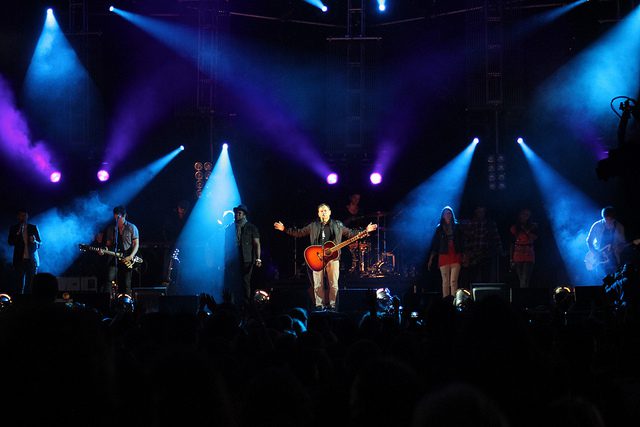How do we know worship when we see it?
Is it in the song?
Is it in the look on the faces?
The closed eyes?
The tears on the cheeks?
Is it in the hands held high?
Is it in the mighty mob in Times Square?
This Church Leaders post says so.
Remember what you learned long ago about faith. Remember the way your Sunday School teacher said it.
“Faith is believing in what you can’t see.” Or what you can’t hear. Or what you can’t feel.
No, worship isn’t about a look.
No, worship isn’t about a posture.
It isn’t about a song.
It isn’t about a feeling.
Worship is found in union with God.
You hear it, Church Leaders? You hear it, Matt Redman? You hear it, “worship” leaders?” You hear it, “worship industry?”
Worship is about letting go. But not letting go like the folks in Times Square. Not just straining our brow, lifting our hands, and losing ourselves on a crowded street.
No, I’m afraid that’s not it. I’m afraid we think we’ve located worship in a song, in a performer, in a beat, in the brief high we feel in our brains.
But it’s not there. That’s only our latest attempt at rationalizing. And it leads us to live silly little lives, filled with silly little cliches and silly little songs and silly little life groups.
And we miss worship, because we think we can know it when we see it.
Worship is about letting go of our emotional crutches and pressing on. By ourselves. Into the world. Without the song to comfort us. Without the band to cheer us on. Without the comfy chairs and the stage and the lights and the amps.
So when the Church Leaders blog tells us they see it, we can respond with holy doubt. The kind of holy doubt that calls bullshit on the false religion of Christian culture when it makes the mystery of faith into something concrete, or sentimental, or marketable.
Worship is found on our lips when we rush together, out of the darkness, out of the dankness, out of the violence, out of the injustice, into our Sunday asylum (because our faith is craziness!) and repeat to each other what our faith says is true. This is how we unite with God.
Worship is found in our hands, not when they’re lifted high, whether in delight or delusion or deception. No, it’s found when we take the little piece of bread into our palm.
Worship is found in our words:
“The body of Christ, broken for you.”
“The blood of Christ, poured out for you.”
Worship is found inside our bodies, as we consume the body and blood, and find that those tiny little elements consume us. This is how we unite with God.
And then we go out, the body of Christ like a burning coal on our lips and in our stomachs, and we begin to see things just a little bit differently. Like the body and blood of our Savior, we are fractured and poured out for the world around us.
It’s in that glorious mystery that we meet God, and we begin to see real opportunities for worship.
But they’re not on a radio station.
They’re not in guitar strings.
Those opportunities are found in the dirt and the waste and the noise and the smell and the blood and the tears that surround us everywhere. In our homes, in our neighborhoods, and in our city streets.
Even the street where Matt Redman is crooning his Jesus music. If we would only open our eyes and lower our chins, and snap out of our jesusy trance, we would see it all around us.
They’re there, in places of greed, hatred, and prejudice.
They’re there, in the empty tables and empty stomachs.
They’re there, in the grief and mourning and loss.
They’re there, in broken homes and abusive relationships.
They’re there, in the violence and oppression.
They’re there, in the perpetual darkness of addiction.
They’re there, in the sex trafficking.
They’re there, in the mental illness.
They’re there, in the persecution.
No, worship isn’t found when our favorite artist plays our favorite “worshipful” song, nor when we shout with our “worshipful” voices and lift our “worshipful” hands and assume our “worship” postures and descend into our “worshipful” dissociation.
Worship is found in a lonely journey, when we’ve dared to leave the song behind and unite ourselves with a lonely Christ.
Amen.
Photo:
Flickr, creative commons 2.0
Flickr, creative commons 2.0












